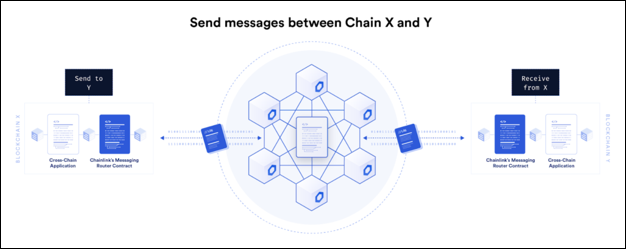
Cross Chain and Interoperability
Cross-chain technology powers the Defi ecosystem with interoperability. In this article, you'll discover more about cross-chain ecosystem...

Cross-chain technology powers the Defi ecosystem with interoperability. In this article, you'll discover more about cross-chain ecosystem...
Have you ever thought about what can be the next step for the interoperability factor in blockchains? Has it occurred to you that a close-knit interoperable network of blockchains requires a continuum? The cross chain ecosystem interoperability is gaining a lot of traction these days. This is mainly because it helps the users translate their assets and fully use the layer 1 and layer 2 blockchains available to the public today. However, currently, a major requirement of blockchains is maintaining a continuum in the development and implementation of cross chain ecosystems. So, let us discuss the philosophy behind such a continuum for cross-chain systems.
The simple motive behind the introduction of blockchain was to create a financial system where there was no requirement for a central authority. Now the layer 1 and layer 2 networks have taken this philosophy a step ahead. These networks offer a chance for the users to create a decentralized financial project without scalability issues. The ETH chain is the most preferable one in this regard since it was made with the motive of promoting DeFi and DApps in the first place. It offers ease of operation and the creation of smart contracts. But the high gas fees it charges have made the DApp developers search for new options. Now that the layer 2 networks are also promoting DeFi and starting to reach the ETH level, developers want to include projects on chains like Avalanche, Solana, etc.
This is where the concept of cross chain ecosystem interoperability takes its grasp. The continuum starts with new chains coming into the DeFi world with new features and adding to the decentralized world. To make this continuum work, the users are allowed to translate all their actions and assets from one chain to another. This allows various features of different chains to be added to one project. This way cross chain ecosystem interoperability makes the DeFi world stronger.
Anyone who is new to the topic of cross-chain systems and interoperability may still be having difficulty understanding the concept. This is why getting through the whole cross chain ecosystem blockchain continuum through its phases is better suited for understanding. The first phase begins with a blockchain entering the DeFi world.
Chains come up with tokens for grabbing and looking for new users and investors. In this phase, the projects offer base-level token movements between the chains. The next phase of the proposed continuum promotes more profits for the investors. If a user holds certain assets over one chain, they must have the option to translate it to another chain if the profits there are higher and stakes are lower. Moving forward, users holding an asset over one chain should be able to use it as collateral on another chain and take crypto loans.
Such a cross-chain system will be able to connect the DeFi world and make it replace the conventional financial systems we see today. Lastly, developers are proposing multi-faced application-based interoperability. It means one application whose sub-parts will belong on multiple chains. This way, the users can use multiple features from different chains in one place.

Now that you understand the cross chain ecosystem interoperability better, there is a need to know how the chains will be able to communicate. It is pretty simple how computers in a blockchain network communicate. A router contract is placed amidst the chains to make the transfer of messages between chains possible. It helps to translate the messages between chains and make them readable according to the chain protocols. The developers initially set the messaging protocols followed by the router contracts. Deployment of such communication mediums makes it easier for the users to be able to make use of the cross chain ecosystem interoperability.
The cross chain ecosystem interoperability is not just an idea anymore and is getting implemented through various projects like Nomad. It helps make the interoperability of chains the talk of the present. The cross-chain system provides the options to optimally implement the features of multiple chains in different projects and make the DeFi world even more accessible to users. So, it can be concluded that the cross chain ecosystem is necessary for advancements in blockchain technology, and it is coming into being rapidly.
What is a Cross-Chain Bridge | What is a Mainnet | Types of Sharding Blockchain | Wrapped Tokens | Blockchain Vs Quantum Computing | How Do Crypto Faucets Work | Cryptocurrency Distribution Models | What is a Crypto Gas Limit | What are Decentralized Apps | Testnet Vs Mainnet | Mastercoin Crypto | Software Wallet for Crypto | Tangle Technology Vs Blockchain | API Vs Blockchain | What is the Graph | Difference Between Stablecoin and CBDC | Blockchain Proof of Authority | Blockchain Waves Platform | Hyperledger Fabric Blockchain | What is a Blockchain Transaction